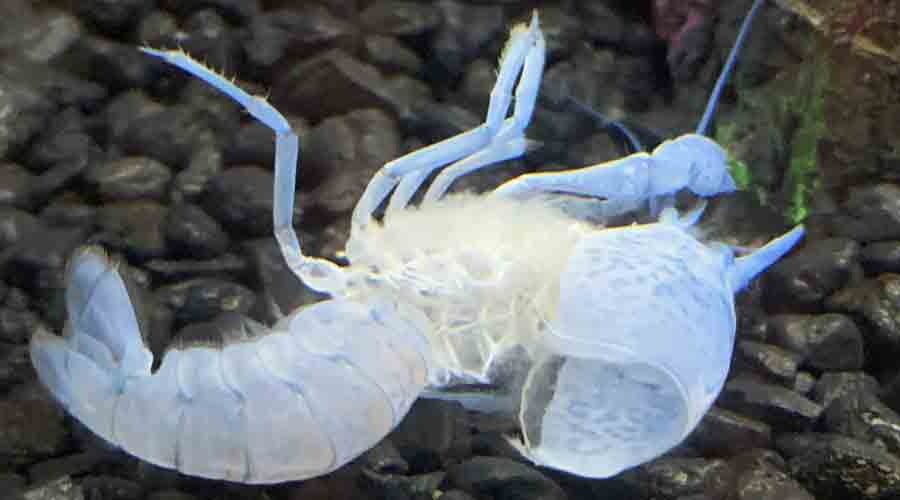If you want to know how to tell if your crayfish is about to molt, let me tell you a short story and give you the tell-tale signs that your little buddy is about to shed his exoskeleton.
Several years ago, I bought my electric blue crayfish a new hideout, mainly for the purpose of giving him a better place to hide. This is especially important during molting and also because crayfish simply like to burrow. It’s just part of being a crayfish.
Well ironically, as it turns out, my pet crayfish literally molted two weeks after buying the hideout—but here’s what happened leading up to when he actually molted.
How to Tell if Your Crayfish is About to Molt
The first thing I noticed about my electric blue crayfish that made me think something was going on was when he seemed to hide all day long under the hideout in my fish tank. And, he just wasn’t as energetic as usual.
He’d usually always come out to snag a sinking wafer, but leading up to his molting, he stopped eating.
My crayfish had for the most part always been pretty lively unless I overfed him. Then he’d just go under a hideout or burrow somewhere.
After a couple of days of my crayfish doing nothing except burrowing in the same exact spot under the hideout, I became a bit concerned. I actually checked on him a couple of times to make sure he wasn’t dead. Luckily I saw a tiny bit of movement.
On the very day that he molted, he actually came out briefly, but quickly went back into hiding.
At this point, I was watching closely because I had just dropped him a sinking wafer, but he was not going after it like he normally did when I fed him. He didn’t seem to be hungry at all. That’s very unusual for crayfish.
After watching for a little while, I stepped out of the room for just a second, maybe five minutes tops. When I came back, BAM, I saw the blue exoskeleton lying outside of the hideout. He had molted.
The Signs on How to Tell if Your Crayfish is About to Molt
Below is a summary of how to tell if your crayfish is about to molt. So if you think your crayfish is horribly sick at some point, just consider the fact that he may be molting.
- Your crayfish becomes withdrawn and less active.
- Your crayfish spends more time hiding out and burrowed.
- In the final stages, your crayfish may not come out at all during the day.
- Your crayfish stops eating.
Crayfish Molting: A Recap
The molting of crayfish is normal. It’s actually very healthy and means that your crayfish is growing. Always make sure that your pet crayfish have a hideout, especially for molting. This will protect your crayfish from other aquatic life. Because when crayfish molt, they are more soft and vulnerable.
Also, and this is very important, never remove the molted exoskeleton from the tank when your crayfish has molted. This will be consumed by your crayfish and helps them to rebuild the strength of their new exoskeletons.

